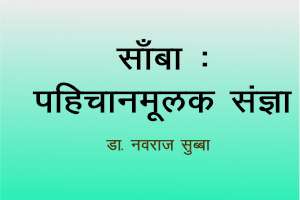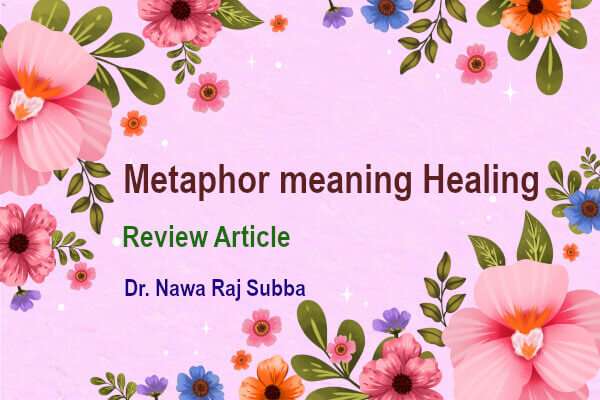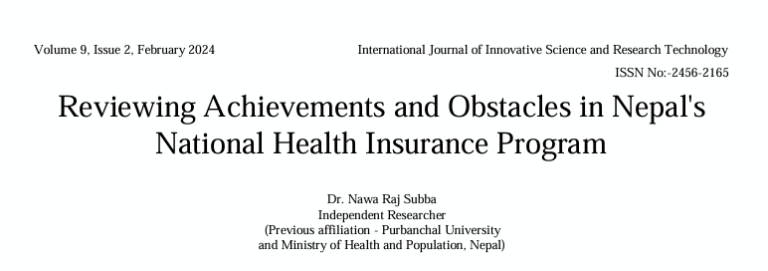Who are Kirat?
An Ethnohistorical Overview of the Kirat People of Nepal and India

Photo credit: himalayanculture.com
Dr. Nawa Raj Subba
Contemporary definition
The Kirat people are native to the Himalayas of India and Nepal. They have an ancient history in the region. Therefore, the Himalayas are Kirat’s cultural and political landscape. Now, Rai, Limbu, Sunuwar, and Yakkha tribes claim to be descendants of Kirat. They have preserved their rich heritage and cultural traditions. Their religious practices and languages are unique despite political upheavals and modernization. This article will examine their multifaceted aspects. Since culture, history, and languages are forming their identity, they are major areas to explore. Thus, the article assesses their social structures, relationships, and issues.
Background
Historians have noted Kirat by date in the region. The historical records and oral traditions illustrate that they ruled Nepal from about 800 BCE to 300 CE when the Licchavi dynasty emerged (Sharma, 2013). Therefore, Kirat still leaves landmarks and names in Kathmandu and beyond the valley. Scholars have identified that the Kirat rulers of Kathmandu contributed to early Nepali society. The Kirat made advancements in trade, agriculture, and metalworking.
The unification of Nepal or the rise of the Gorkha Kingdom in the 18th century is considered a significant event for the Kirat people and culture. Kirat felt suffering after the unification of Nepal. The unified Nepal affected the Kirat life and altered their migration and settlement patterns. The Gurkha state expansion forced many Kirat groups to relocate further east. They reached eastern Nepal and northeast of the Indian territories of Darjeeling and Sikkim (Subba, 1999). Despite the displacement, the Kirat people have maintained their cultural identity.
Language and Scripts – Tibeto-Burman
The Yakkha, Rai, Limbu, and Sunuwar ethnicities, counted among the Kirat tribes, speak the Tibeto-Burmese language. These languages have their scripts. The Limbu people protect their heritage through the Sirijunga script. Kirat languages include mythology, folklore, and songs that have existed for generations. They have a magnificent oral tradition. In which historic learning and ethnic values are found. They are raising awareness of preserving their inheritance.
However, Kirat dialects face major challenges in the present era. The domination of Nepali Khas as an official language and the effect of globalization have endangered indigenous linguistics and values. However, informative and ethnic programs have been made to resume them. It is a matter of worry that the new generation in the native language and script is moving away (Parker, 2006).
Religion and Beliefs- Shaivism, Animism
The Kirat people have traditionally practiced shamanism and animism. They respect and worship ancestors, souls, and natural structures like mountains, rivers, etc. The traditional knowledge of Kirat is mundhum. It dictates religious and social order. Therefore, the Mundhum of kirat is an integral part of identity. Divine existences such as Sumnima and Paruhang or Yuma and Theba are recognized in the Kirat religion. Religious rituals occur only after addressing rivers, mountains, forests, and other elements of nature (Chemjong, 1967).
Udhauli and Ubhauli festivals are the main cultural festivals of the Kirat community. These festivals refer to the cycle of agriculture and changing weather. During these festivals, gifts are offered to the ancestors and worshiped. Traditional dances like Sakela and Yalang are danced after eating a group feast. These traditions express a deep connection with the land of the Kirat tribe (Bista, 2004).
Introducing Buddhism and Hinduism to the region has influenced Kirat religious practices, with some Kirat groups incorporating elements of these religions into their own. Nevertheless, many Kirat people adhere to traditional spiritual practices, often blending them with other faiths syncretically.
Social Organization and Identity
There is a tradition of Clan (Thar) in kirat society. Thar gives information about which community or family they belong to. Each clan refers to a specific character and lineage within the community. Hence, their clan is the basis of personal and social identity. Clans are taken into account when getting married or doing social work. Thus, social marriage based on ethnicity shapes community bonds. These Thar helps to increase close family relations. In any case, all the people collectively consider themselves members of the community. They all clans promote a collective spirit (Subba, 1999).
Costumes and commodities are important symbols in Kirat culture. Limbus, for example, prides itself on home-woven Dhaka fabric as its ethnic dress and commodities like bags as its identity. Moreover, their culture is evident in their art, music, and dance. Chandi dance by Rai ethnic and Yalang dance by Limbu ethnicities are considered important parts of their life cultures (Maharjan, 2015).
Current Challenges and Responses
The Kirat communities are struggling for their indigenous rights for long time in Nepal. Their main challenges are political and economic marginalization and cultural degradation. They express dissatisfaction, especially in land ownership and political representation areas. They express dissatisfaction, especially in areas of land ownership and political representation. The Constitution of Nepal 2015 addressed some indigenous peoples’ issues, but many complaints have not been agreed upon. So, they complain and insist on more self-sufficiency and rights from the government (Gellner, 2016).
In India, the Limbu and Rai communities are also struggling with similar concerns. They are trying to be recognized as Reserved Tribes, which would provide significant legal opportunities. This demand is based not only on political privilege but also on strengthening their ethnic and cultural identity. They intend to be acknowledged for their contributions to the territory’s progress (Bhattacharya, 2010).
Economically, the community relies mainly on subsistence farming. Their access to education, healthcare, and other basic services is limited. Young people are flocking to metropolitan clusters and leaving the nation in quest of better possibilities. This development has interrupted their normal lives and harmed their ancient rituals.
Conclusion
The Kirat, a community spread across Nepal and India, possesses a vibrant and resilient cultural legacy that has endured countless challenges. Their various languages, beliefs, and customs define their identity. Exploring their history and traditions is crucial for recognizing their significant contributions to the Himalayan region. By supporting their initiatives to safeguard their heritage, we help their distinct traditions flourish within the contemporary world.
References
Bista, D. B. (2004). *People of Nepal* (6th ed.). Ratna Pustak Bhandar.
Bhattacharya, D. (2010). *Ethnic movements in India: Focus on Assam and the North-East*. Vikas Publishing House.
Chemjong, I. S. (1967). *History and culture of the Kirat people*. Kirat Yakthung Chumlung.
Ebert, K. H. (2003). *The Kiranti languages: Lexical and grammatical sketch*. LINCOM Europa.
Gellner, D. N. (2016). *The politics of ethnicity in Nepal: Perspectives from the margins*. Vajra Books.
Maharjan, L. (2015). *Cultural identity and continuity among the Kirat people of Nepal*. Nepal Academy of Fine Arts.
Parker, M. (2006). *Language death and revitalization in the Himalayas: The case of the Kirat languages*. Journal of Himalayan Linguistics, 3(1), 45-68.
Sharma, P. (2013). *Kirat identity and the state in Nepal: A historical perspective*. Contributions to Nepalese Studies, 40(2), 171-195.
Subba, T. B. (1999). *Politics of culture: A study of three Kirata communities in the Eastern Himalayas*. Orient Blackswan.
For more about Kirat kirat.com.np
Writer’s Email: [email protected] & Copyright (c) 2024 Nawa Raj Subba.




